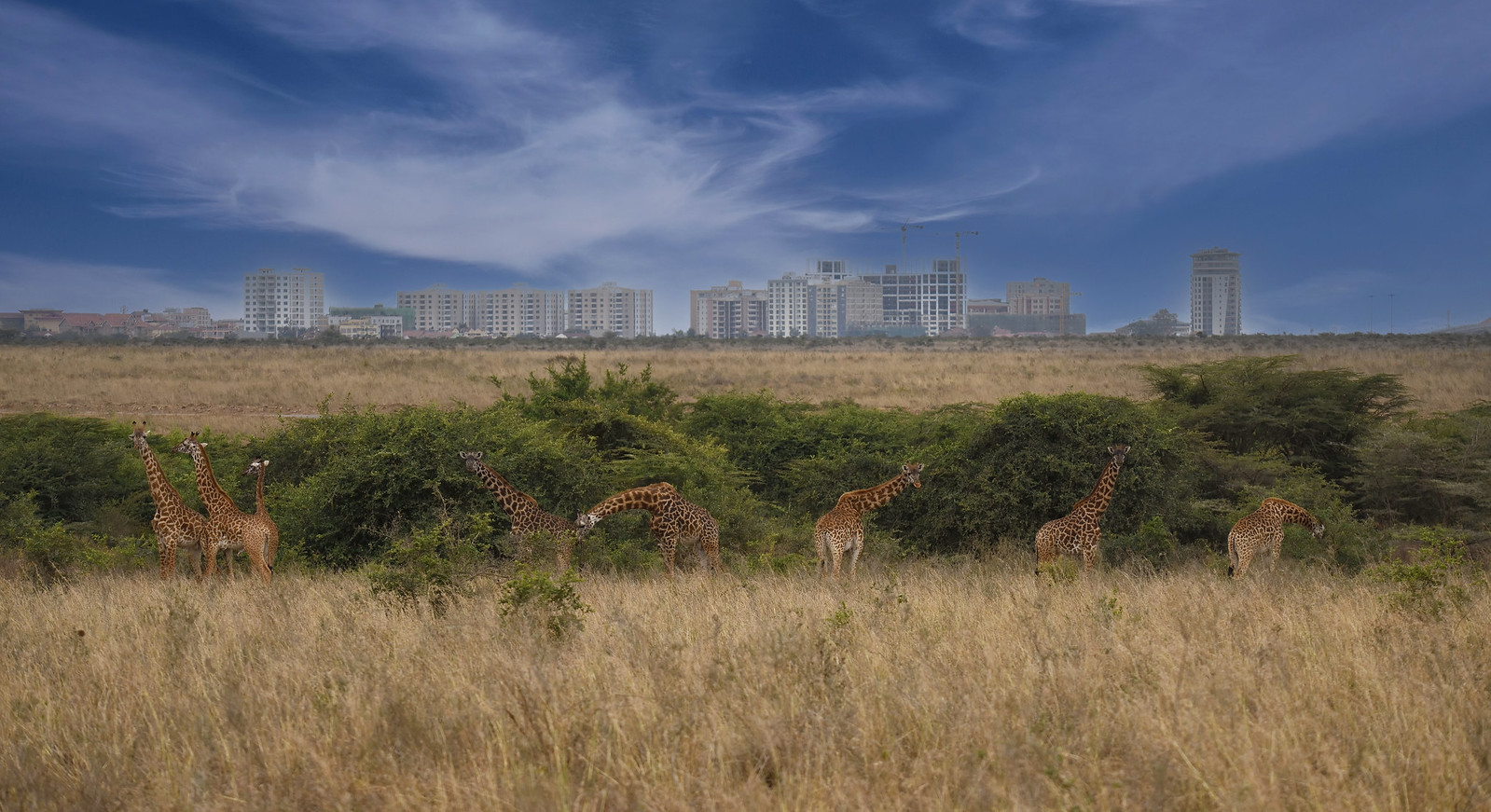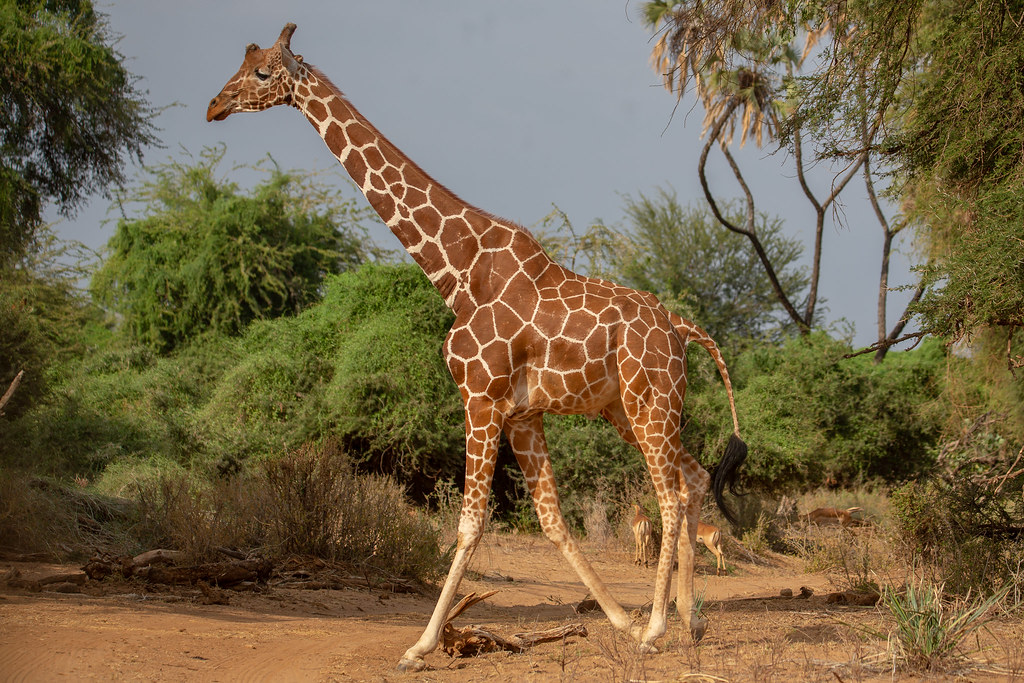Nairobi National park | Attraction in Kenya, tours in Kenya
Nairobi National park is located at the edge of Nairobi the capital city of Kenya just 7 km (4.3 mi) south. The park is very unique in the way that it’s the only park in the world located in the city, it derives its name from the city it borders. Both people and wildlife live in harmony because its unique location in a growing city some times threatened with growing human and livestock increasing population.

Nairobi national park is a distinctive wildlife sanctuary which offers unparalleled combination of modern civilization and wild nature. The park is fenced on it’s three sides with electric fence to protect wildlife from human danger and encroachment on the park’s land and also to protect humans from wildlife danger, it only the southern sector of the park that’s not fences but rather bordered by Mbagathi River in the southwest and the adjacent Kitengela conservation Area and the Athi-Kapiti plains that always the migration of large ungulate species from the park to this adjacent land this migration usually takes place in the wet season and they return back in the dry seasons like wildebeests, zebras etc.
Nairobi National Park covers and area of 117 sq km (45 sq mi) compared to other Kenyan National Parks, the park covers a relatively small area but it boots a large and varied wildlife population and it is one of the successful Rhino sanctuaries in the country giving the park its nick name the “Kifaru Ark” which means Rhinoceros Sanctuary. Other than wildlife the park is covered with open plains that gently slope from west to east, backdrops pd city scrapers, rocky ridges with lush vegetation, grass plains, scattered Acacia bushes, dry forest with stands of Olea Africana in the park’s highlands, the south of the park has Riverine forest the parks’ permanent lake.

The park has permanent waters from where over 100 wildlife species quench their thirst, the animals found in Nairobi National Park include endangered black Rhinos, lions, leopards, cheetahs, hyenas, buffaloes, giraffes, Thomson’s gazelle, Grant’s gazelle, common eland, impala, hartebeest, waterbuck, common warthog, black-backed jackal, blue wildebeests, plain Zebras, Nile crocodiles to mention but a few, Elephants are not found in the park because of its smalls area coverage. the park is also home to over 500 Bird species 20 of which are migratory European birds that come to the park seasonally like Secretary bird, Martial eagle, Pallid harrier, sooty falcon, lesser Kestrel, whit-bellied bustard, grey crowed crane, corncrake, common Ostriches, parrots, guinea fowls, crowned cranes to mention but a few.
In 1963 in the park an animal Orphanage was created inside the park which offers rehabilitation and treatment for wildlife, it also acts has home to the young wildlife that have lost their parents/ or lost their way home until they mature and then placed back in the wild, this orphanage is for all the wildlife in Kenya. The park is managed and governed by the Kenya Wildlife Services.
History of Nairobi national park
The park was first set aside as a game reserve by the colonial government, later in 1946 officially gazette as a national park and became the first national park in the country to coexist, the main reason for gazetting the are was the preserve the wildlife that has started to extinct because of human threat resulting from increased population, high demand for ivory. The by then President of Kenya Danial Arap Moi burned over 12 turns of Ivory on site painting a protection picture and this highly improved the conservation and protection of wildlife in the park.

Wildlife in Nairobi national park
The park has variety of wildlife in its small area with over 100 wildlife species, it is a place where tourists are guaranteed sights on black Rhinos, other wildlife in the park include Africa’s big five apart from elephants because the area of the park can’t contain them namely lions, cheetahs, wildebeests, zebras, hippos, elands, impala, amphibians and reptiles like crocodiles among others.
Bird species in Nairobi national park
Nairobi National Park boosts for over 400 species of bird species like Secretary bird, Martial eagle, Pallid harrier, sooty falcon, lesser Kestrel, whit-bellied bustard, grey crowed crane, corncrake, common Ostriches, parrots, guinea fowls, crowned cranes to mention but a few including migratory birds from Europe.
Attractions in Nairobi National Park
Nairobi Animal Orphanage
where is Nairobi national park located the park is located with in the national park and serves as a treatment and rehabilitation center for wildlife all over Kenya like lions, cheetahs, hyenas, jackals, serval cats, rare Sokoke cats, leopards, primates, elephants, warthogs, bird species like ostriches, parrots, guinea fowl, crown to mention but a few. This orphanage attracts a number of tourists in to the park.
Impala Observation point
This point offers views of Impalas in the vast open plains of Nairobi National Park, this point is one of the highest points in the park, the vast impala plain lands are also picnic/ events site which gives tourist a chance to enjoy meals while enjoying wildlife viewing.
The ivory burning monument site
Aland mark was to put in place to symbolizing the conservation of wildlife making the exact site that the by then Kenyan president sent a message to all poachers to stop killing wildlife, it will lead to it extinction.
David and Daphne Sheldrick Elephant Orphanage
This is a rescue center for wildlife animals but most especially baby elephants which are looked after and then later taken to Tsavo national park because Nairobi National Park can’t accommodate elephants.
Kifaru Ark
Kifaru Ark also translated as Rhino Sanctuary, it is one of the successful Rhinos homes in Kenya, it is one of the few places in Kenya where you’re guaranteed views on black Rhinos
Activities in Nairobi National Park
Game drives
The park provides both morning and evening game drives in 4x4WDVehicle, the best game drive is the morning one since wildlife is more active in the morning compared to the evening game drive, a number of wildlife will be spotted in the park as mentioned above before they go back to their hiding when the sun raises.
Walking safari
The park has raised wooden walkways that are provided in the park to use as the visitors walk close to the wildlife at a safe range, you will be in position to spot wildlife down. this walk gives you insights on what to expect on a game drive.
Bird watching
Birds in Nairobi national park, the park is a habitant to a number of bird species, endemic, residents and migratory bird species like ostriches, secretary birds, corncrake, white-headed vulture, pallid harrier, grey crowned crane to mention but a few.
Nairobi national park accommodation
Accommodation in Nairobi national park, facilities ranging from luxury, mid-range to budget which are always open to visitors with hospitable staff in any of the lodge of your choice and budget, some of the accommodation inside Nairobi national parks include Masai lodge, Boma Nairobi, Nairobi safari club, Panari hotel, Weston hotel, Bermuda gardens hotel, Ololo Safari Lodge, Emakoko lodge, Eka hotel, Nairobi tented camp, Ole sereni hotel, Anga Afrika, Tawala homes, Double tree Hilton Nairobi and many others.
Nairobi national park best time to visit
Nairobi National Park is open 24/7 all year round welcomes visitor but just like the other Kenya National parks its best to visit the park in the dry season in the months of July to October and from January to February. Most of the drainages system of conservations around the park dry up hence most wildlife finds its way to park because of its permanent water making the park largely populated in the dry season and all species can be spotted in a game drive, even Herbivores gather in the park during this season.
How to get to Nairobi national park
By Road; the park is just 10 kms South of Nairobi and this can take few minutes’ drive to the park on a tarmacked road.
By Flight; you can fly from Jomo Kenyatta International air port Wilson airstrip in the park, can only be accessed by domestic flights.




